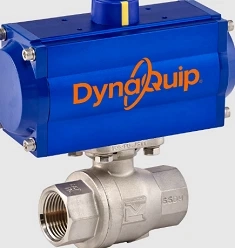A pneumatic actuated ball valve is a highly efficient and versatile valve system widely used in various industrial applications. This type of valve leverages compressed air to operate, offering numerous benefits that make it an attractive choice for industries that require reliable and efficient fluid control.
One of the primary advantages of a pneumatic actuated ball valve is its rapid operation. These valves can open and close quickly, which is crucial in systems where timing and response speed are critical. The ability to control fluid flow almost instantaneously helps in maintaining system efficiency and safety, especially in high-pressure environments. Additionally, the pneumatic actuation ensures a smooth and precise operation, reducing the likelihood of wear and tear, which can extend the lifespan of the valve and reduce maintenance costs.
Another significant benefit of using a pneumatic actuated ball valve is its reliability in harsh conditions. Unlike electrically operated valves, pneumatic systems are less susceptible to damage from electrical interference or failure. This makes them ideal for use in hazardous environments, such as chemical processing plants or oil and gas facilities, where safety and reliability are paramount. The robust design of these valves ensures that they can withstand extreme temperatures, pressures, and corrosive substances, providing consistent performance over time.
The ease of automation is another key advantage of pneumatic actuated ball valves. They can be easily integrated into automated systems, allowing for remote operation and control. This integration enhances operational efficiency and enables precise control over fluid flow, which is particularly beneficial in complex industrial processes that require constant monitoring and adjustment. Furthermore, the pneumatic actuation system can be customized to meet specific operational requirements, making it a flexible solution for various applications.
Energy efficiency is also a notable benefit of using pneumatic actuated ball valves. These valves consume less energy compared to their electric counterparts, as they only require energy during the actuation process. Once the valve is in the desired position, no additional energy is needed to maintain it, leading to cost savings and reduced environmental impact.
In conclusion, a pneumatic actuated ball valve offers numerous advantages, including rapid operation, reliability in harsh conditions, ease of automation, and energy efficiency. These benefits make it a preferred choice in various industries, where precise fluid control and system efficiency are essential.



